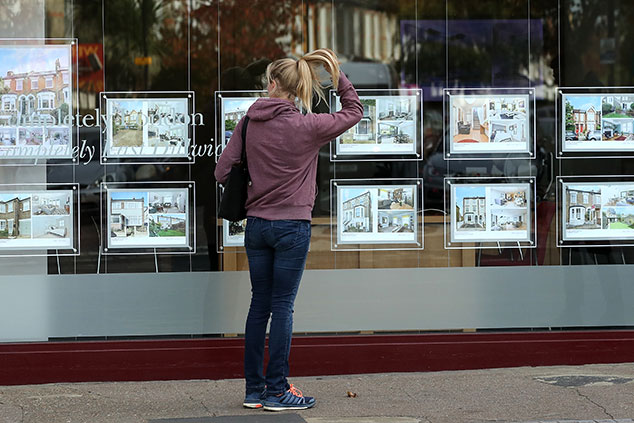
This article is taken from our FREE daily investment email Money Morning.
Every day, MoneyWeek’s executive editor John Stepek and guest contributors explain how current economic and political developments are affecting the markets and your wealth, and give you pointers on how you can profit.
In this week’s issue of MoneyWeek magazine
●
America parties on – but it won’t be able to avoid the hangover
●
Do you have a bullshit job?
●
Don’t lose your child’s savings
●
A risky punt on promising new drugs
●
Three solid dividend growers for turbulent times
● Share tips of the week
Not a subscriber? Sign up here
Last month, annual house price growth in the UK fell to the lowest rate seen since mid-2013.
According to Nationwide, house prices in August were up just 2% compared to the same time last year. That’s compared to year-on-year growth of 3.2% seen in January.
What’s responsible for the shift?
First and foremost, it’s the great buy-to-let sell-off.
Why house prices are roughly flat
There are masses of different house price indices in the UK, reflecting the national obsession with property values.
But they all point to roughly the same thing happening: house prices nationwide are rising roughly in line with inflation, which means they are flat in “real” terms.
This average covers the fact that house prices in London are falling a bit, they’re flat in the southeast, and they’re gently rising in other parts of the UK.
In other words, prices are falling in the places where houses are most expensive, and they’re rising slowly in areas where they are at less unreasonable levels. That makes sense.
What’s driving this change and will it continue?
We’ve discussed this several times here before but it’s worth keeping an eye on. Firstly, because residential property is a critical yet oft-neglected component of the economy and the financial system. Secondly, because we want to see if our thesis is panning out as expected.
The first factor behind the gentle cool down in the property market is that residential property has been made far less attractive as an investment. There’s an extra layer of stamp duty for second homes. The tax treatment of buy-to-let landlords is becoming steadily less favourable and that will only continue over the coming couple of years. And foreign investors now have more hurdles to leap over.
So that has knocked a big chunk of demand out of the market. Capital Economics points out that, according to the latest available data, the stock of privately rented homes fell by 46,000 in the year to March 2017, and that the rate of growth slid sharply in the previous year.
According to the research group, this drop appears to have continued and perhaps even increased in scale, judging by changes in the number and value of buy-to-let loans outstanding.
“And given the further reduction in mortgage interest tax relief that is on the way, stagnant house prices and rising interest rates, there are few reasons to think that sell-off will soon abate”, notes property economist Hansen Lu.
This was always the point of the changes to the tax treatment of landlords, made when George Osborne was chancellor: to replace the would-be buy-to-let landlord with the would-be first-time buyer.
The Tories (certainly since Margaret Thatcher) always wanted Britain to be a property-owning democracy. This – plus the much less sensible Help-to-Buy scheme – was their “nudge” scheme to get that ideal back on track.
The second factor, of course, is that interest rates are rising and houses are already very expensive. If house prices are already as high as they can go, and the cost and availability of credit to buy a house is stable or rising, then prices can only remain the same or fall, barring a massive increase in wages.
This is very good news – let’s hope it continues
Just to be very clear – this is all good news. As we’ve said many times before now, this is what a healthy housing market correction would look like.
You want house prices to fall in real terms (ie, after inflation – specifically, in this case, wage inflation). A drop in real terms makes houses more affordable and would go a long way to addressing the anger that a lot of younger people feel about being shut out of the market.
At the same time, a fall in real terms doesn’t panic people in the way that a fall in nominal terms does. Most people (perhaps excluding Londoners) are mentally equipped to cope with the idea that their house is still worth roughly what they paid for it, even if they bought it a decade or more ago.
But they struggle a lot more with the idea that their primary asset has lost value. That’s bad for confidence. And given sufficiently big falls, it’s bad for banks’ balance sheets too.
So here’s what we’re crossing our fingers for: at the margins, the housing market balance of power continues to shift towards first-time buyers from buy-to-let landlords. The fact that mortgages simply can’t get any cheaper keeps house prices frozen or gently falling. Those things seem likely.
The missing component for now is wage inflation. Pay (including bonuses) rose at an annual rate of 2.4% in the second quarter of the year. So while that’s just about keeping up with house price growth, it’s hardly shooting the lights out.
However, with the unemployment rate at a multi-decade low, it seems hard to believe that we won’t see that improve too. Like I said, fingers crossed.
Oh, and we’ll be taking a much closer look at the property market in MoneyWeek magazine later this month, when we’ll be hosting a roundtable discussion with various property market experts to get their views on what’s next. If you’re not already a subscriber to MoneyWeek magazine, sign up here.